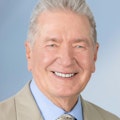The pandemic’s effect on selling or purchasing a dental practice (Part 2)
Editor's note: Part one of this series may be found here.
To begin the process of hiring or becoming an associate with a later sale and purchase, the confidentiality letter, practice valuation, and letter of intent should be authorized and prepared just as with a complete sale and purchase. However, an associate employment agreement, the sale and purchase agreements, and the practice owner’s postretirement employment agreement should also be prepared.
If the practice owner plans to work for seven years or fewer, hiring or becoming an associate with a later sale and purchase is an excellent alternative to entering into a partnership. In a partnership, it takes the purchaser candidate about seven years or more to pay for the first half of the practice. It’s better to hire or become an associate with an agreement for a later complete sale and purchase.
The signed sale and purchase agreements close in one to three years from the date that the associate is employed on a full-time basis, or earlier upon the practice owner’s death, disability, or retirement. Depending on production levels, the former owner works for the purchaser’s practice for a predetermined period of time and thereafter by mutual agreement. If the new owner terminates the former owner’s employment for no reason, the former owner’s restrictive covenant can become null and void if negotiated in the sale and purchase agreements.
An earnest money deposit with a later sale is appropriate in this case because the practice is removed from the market, except for a limited disengagement period for either party. Each side signs a promissory note for an agreed upon sum. Except for specified reasons, if the associate does not purchase the practice, the promissory note becomes immediately due and payable and the associate’s restrictive covenant remains in effect. The practice owner will also be subject to a promissory note that becomes immediately due and payable should the practice owner not sell the associate the practice and the associate’s restrictive covenant becomes void. The earnest money deposit in the form of a promissory note is helpful to an associate who cannot afford a significant deposit. The promissory notes are also in a sum sufficient for the practice owner to take the practice off the market.
If 100% financing is not available as of the date of the sale and purchase despite the associate’s best efforts to obtain it, either the obligation to purchase the practice becomes null and void, or the terms of the owner financing as designated in the sale and purchase agreements go into effect.
As to determining the purchase price, the practice is valued as of the date the associate’s employment begins. It is valued again one year after the associate starts working on a full-time basis. The rationale is that in year one, the associate’s production is attributable to the practice owner’s patient demand. If the associate grew up in the community where the practice is located, those patients directly attributable to the associate can be excluded from the goodwill calculation.
The purchase of new equipment or technology during the associate period should be mutually agreed upon over a threshold dollar amount, except for replacement or equipment breakdown. The selling and purchase price of such equipment and/or technology is usually depreciated on a 10-year, straight-line basis. The calculation of the depreciation should be included in the letter of intent and the sale and purchase agreements.
The benefit of hiring an associate with a later complete sale and purchase is that there is one owner, not two. More importantly, unlike a partnership, there is asset treatment, which means that the practice owner receives mainly capital gains, is paid in cash, and the purchaser can deduct the full purchase price. If the practice was formed prior to August 10, 1993, the exception is a son or daughter. In this case, the goodwill is not deductible due to the antichurning rules under Internal Revenue Code Section 197.1
Merger
If a practice is relatively small or is unsellable, a practice owner can merge into a larger practice with adequate space. The practice owner can often continue to work until ready to retire, at which time the purchaser’s practice buys the practice owner’s patients, usually over a 12-month look-back period. The purchase price is usually a percentage of the purchasing candidate’s collections attributable to the former owner’s goodwill or revenue generated from the former owner’s patients.
The benefit to both parties is that the purchasing practice pays only for the goodwill actually transferred. Generally, there is an initial payment of the percentage of the anticipated goodwill value upon retirement of the practice owner, with the remaining percentage trued up, usually 12 months after the sale. Another way to determine the goodwill value is to set a value per patient seen by the purchaser more than once for 12 to 18 months.
One reason mergers are becoming common is because new dentists cannot afford to purchase small practices without having another job, and they do not want to risk not receiving the benefit of what they’re paying for. For those practices that work on significantly reduced schedules or do not want to open as a result of the pandemic, mergers can be a useful tool for the practice owner to sell. The advantage of a contingent sale is that a purchaser does not risk paying for patients that the purchaser does not retain. If the patients remain with the purchasing practice, the practice owner receives full value, usually one year later. If the practice owner insists on full payment as of closing, the purchaser should not be willing to pay full value.
Closing a practice
If a successor is available when a practice owner is ready to leave, the practice is sold. However, there are times when a successor is not available when a practice owner is ready to leave. If a practice owner can afford to retire but cannot locate a purchaser, the owner can elect to work one or two years longer than anticipated. Then if a successor is not available and considering the amount of money earned during such time, the practice owner can close the doors and probably will not lose anything.
On the other hand, some specialists and general dentists located in certain geographic areas have no choice but to close the doors should a successor not be available. A practice that anticipates not finding a purchaser should ensure that savings are sufficient to close the doors and walk away.
A difficult specialty is orthodontics because cases need to be completed, new cases are not coming in, and overhead remains high. For orthodontic practices, it is best to locate another orthodontic practice to complete cases, even at an economic cost, which will probably be less than the overhead.
Summary and thoughts
For those practices that have not yet entered into a complete sale and purchase, the consideration of the various nuances involving a complete sale and purchase are tantamount to a successful transition of ownership.
Reference
1. 26 U.S. Code § 197 - Amortization of goodwill and certain other intangibles. https://www.law.cornell.edu/uscode/text/26/197
WILLIAM P. PRESCOTT, JD, EMBA, of Wickens Herzer Panza in Avon, Ohio, is a practice transition and tax attorney, and former dental equipment and supply general manager and representative. His most recent book is titled Joining and Leaving the Dental Practice, available through the ADA Center for Professional Success. ADA members can download the e-book for free at ADA.org/prescottebook. For this and Prescott’s other publications, visit prescottdentallaw.com. Contact Prescott at (440) 6958067 or [email protected].
About the Author

William P. Prescott, JD, EMBA
William P. Prescott, JD, EMBA, of Wickens Herzer Panza in Avon, Ohio, is a practice transition and tax attorney, as well as a former dental equipment and supply manager and representative. His most recent book, Joining and Leaving the Dental Practice, 4th edition, is available through the ADA Center for Professional Success. ADA members can download the e-book for free at ada.org/prescottebook. For this and Prescott’s other publications, visit prescottdentallaw.com. Contact him at (440) 695-8067 or [email protected].
